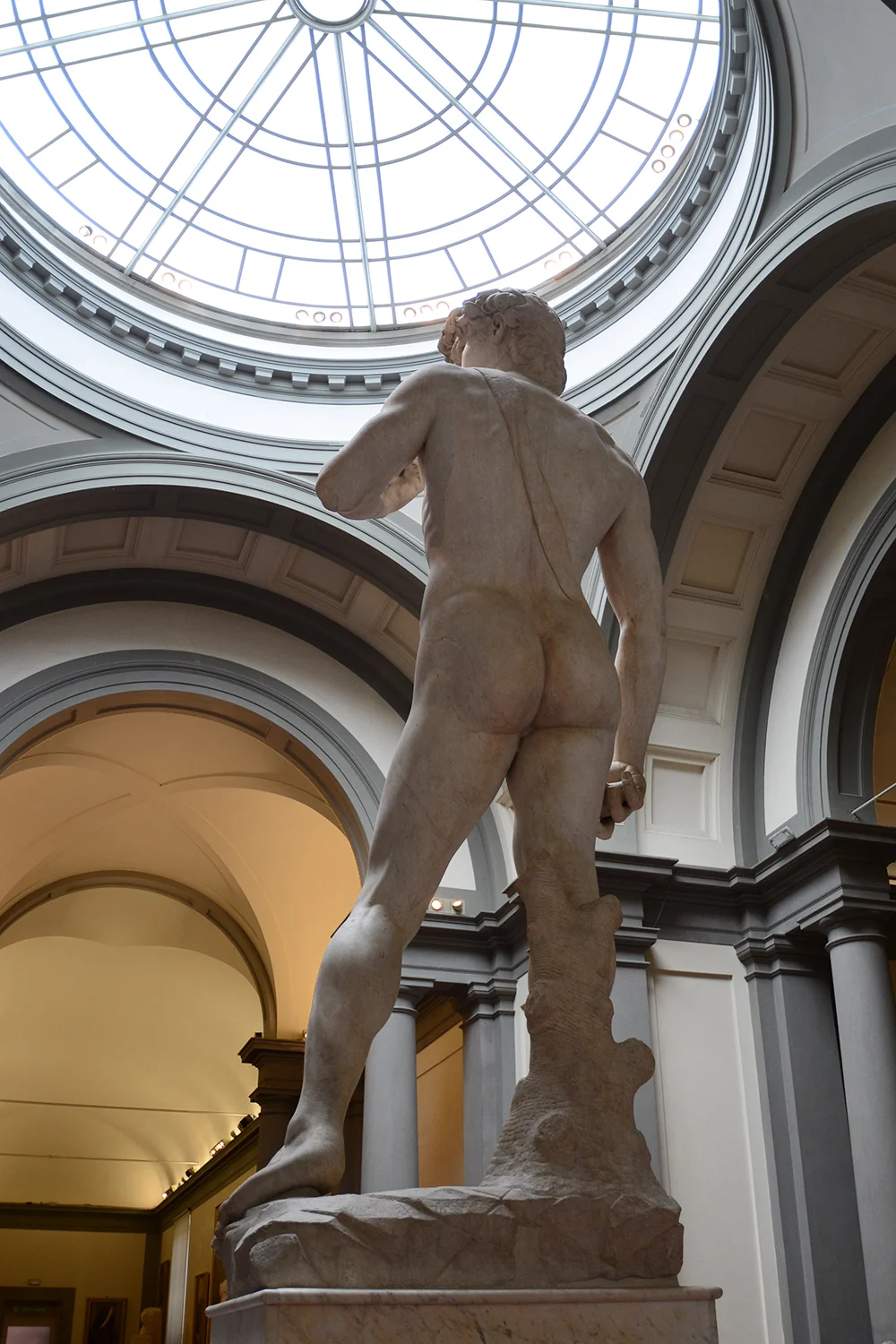










“For in it may be seen most beautiful contours of legs, with attachments of limbs and slender outlines of flanks that are divine; nor has there ever been seen a pose so easy, or any grace to equal that in this work, or feet, hands and head so well in accord, one member with another, in harmony, design, and excellence of artistry.”
Giorgio Vasari, from his “Lives of the Artists”

Why the redundant title–isn’t there only one David? More accurately, Michelangelo’s came after Donatello’s David which is also a justifiably famous sculpture from the Renaissance. And a third by another sculptor, Verrocchio who may have used the young Leonardo da Vinci then working in his studio as his model. But if some proclaim da Vinci’s Mona Lisa as the highest Renaissance painting, the only sculpture of the period that approaches Michelangelo’s David is his other great masterwork, La Pieta.
The genius eye Michelangelo employed in the flowing marble robes of the Pietà and the Virgin’s sorrowing gaze on her lifeless son soars to an even higher art in the lean, boldly naked body of the youthful David. And unlike Donatello’s bronze, Michelangelo’s David is neither prepubescent nor androgynous. In present parlance, David stands proudly ‘ripped.’ David was created by Michelangelo at age 26. Had he chipped away at the marble as an older man, one wonders what that outcome might have looked like.
Michelangelo competes with himself and no other. Like Shakespeare’s gift to the English language, his art stands outside time.
The Italian Renaissance, (la rinascita or ‘rebirth') lay at the heart of Medieval Europe’s rediscovery of Greco Roman art, philosophy and literature. At the heart of the Italian Renaissance lay the city-state of Florence. The list of the artists Florence and the Medici supported is an elaborate fable.
A particular aspect of the Renaissance was the movement away, albeit tentative, from the Medieval Church as the sole font of wisdom. The earlier Greek philosopher, Protagoras’ famous quote "Man is the measure of all things” encapsulates the Renaissance’s movement toward humanism. Da Vinci’s Vitruvian Man is easily the best literal illustration. Then there is Michelangelo’s David to consider.
Since the time of the Greeks, and their affinity for the natural (au naturel?), Medieval Europe had been cloaked (suffused, even suffocated) by the Church’s puritanism, always pointing elsewhere than nature for a higher purpose. Were the ancient Greeks the hedonists Church officials preached against? Were they any more so than current day? Aside from a few bawdy frescoes discovered in the ruins of Pompeii, were the Romans any more so?
It took the 18th Century Enlightenment to reintroduce the humanism undergirding the world’s best experiments in democracy. But it all began with the Italian Renaissance–and the Greeks they sought to emulate. Dr. Cooledge lectured on the Renaissance as well as any Baptist minister could–and though he himself was of that religion, he understood and cared greatly that his students understood the importance of what the Florentines had brought into the world.
So it was fair to expect nude sculpture being reintroduced in the Renaissance. Circling Michelangelo’s David, I stood in its presence for as long as I could, politely as humanist and heterosexual man thinking about Michelangelo, his overt talent at conveying both the founding Biblical story and the homoerotic carved from a veined block of marble.